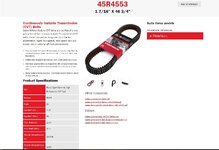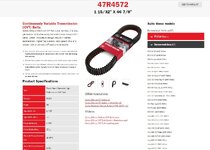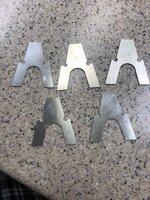Beware of the Gates belt lookup tool for 850. If you type in the 3211216 off an Axys 850 or Matryx 850 it brings up the 45x4553 (either 45G4553, 45C4553, or 45R4553) and these are the wrong belts they have a 26 degree belt angle. The sheaves have a 28 degree angle. I personally made that mistake and it will run a 45C4553 belt but the deflection is all messed up and you clutch will burn in the right angle kind of, but it will cause slipping at times and never grip right. After comparing the 3211216 angle and the 47C4572 to the actual clutches themselves they match the angle correctly with the 28 degree angle. The 26 degree angle does not (4553).








